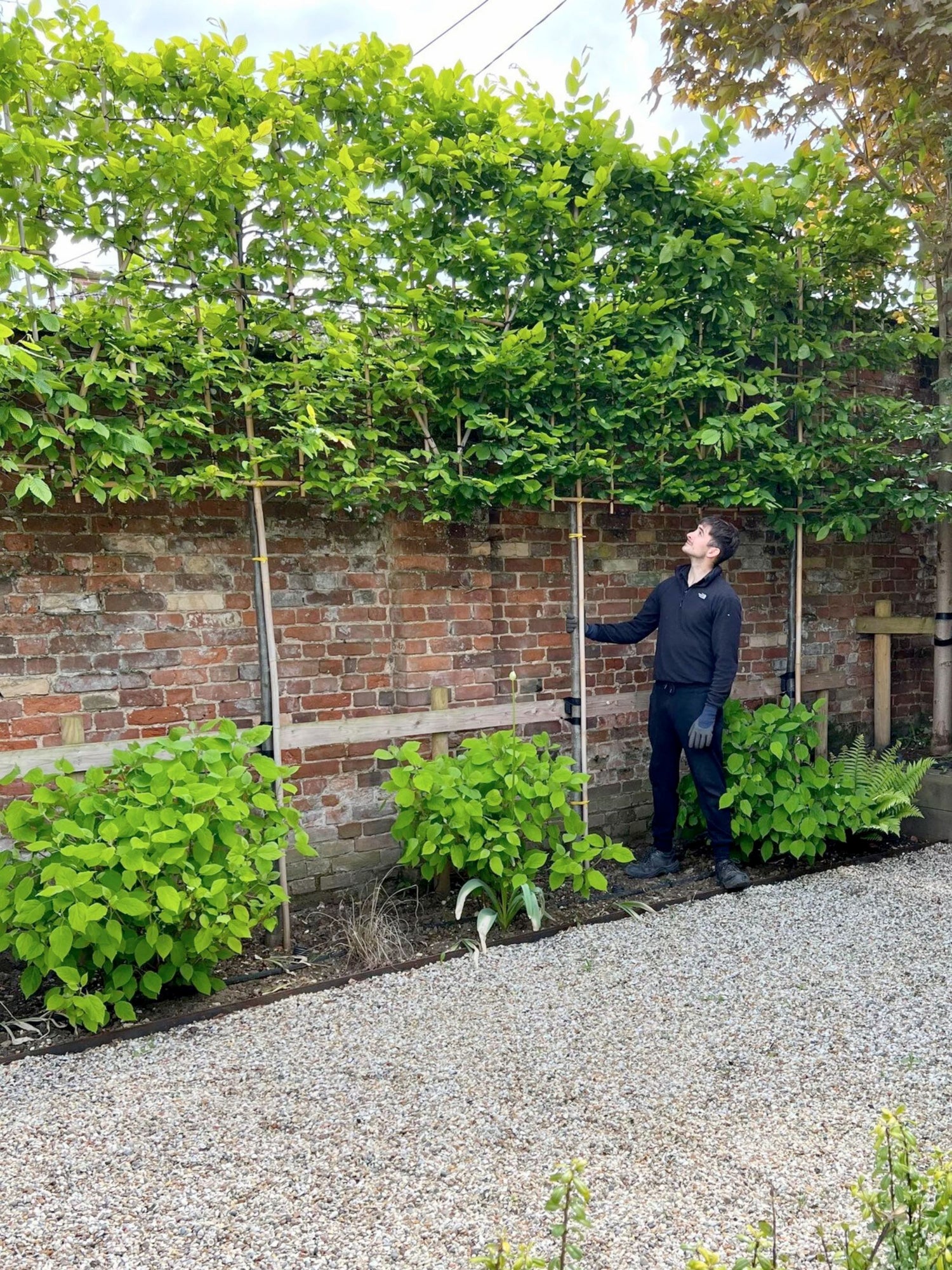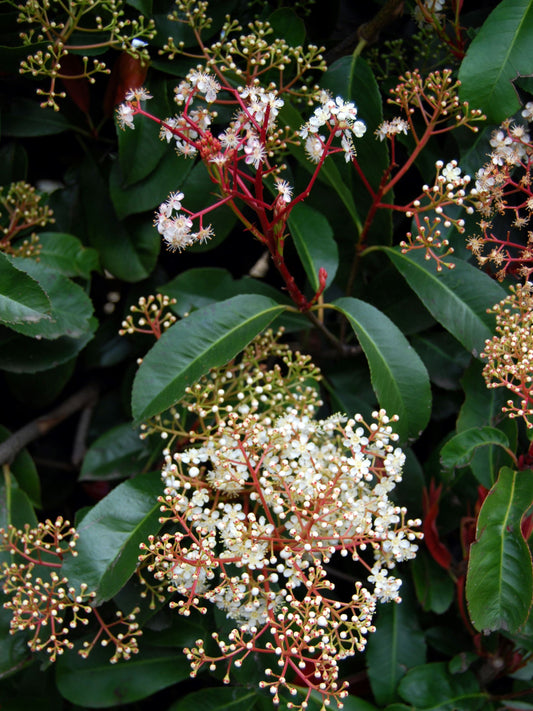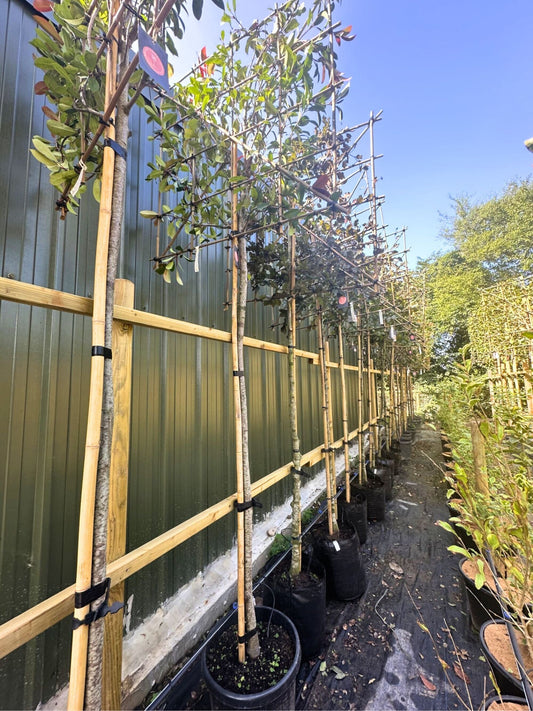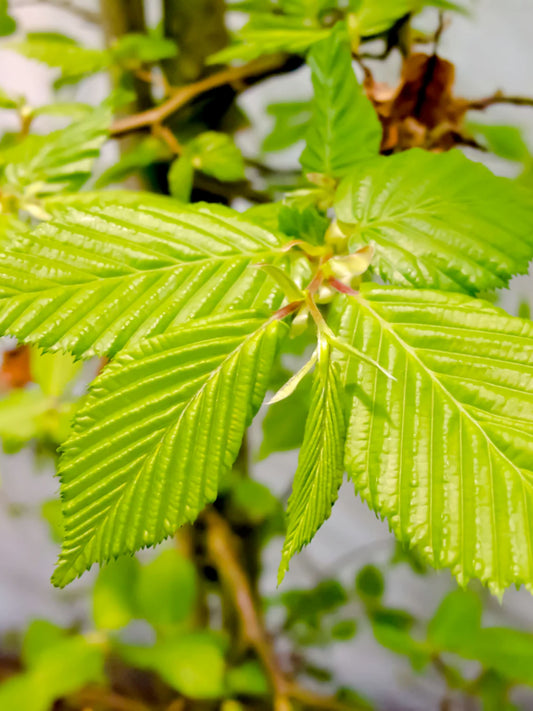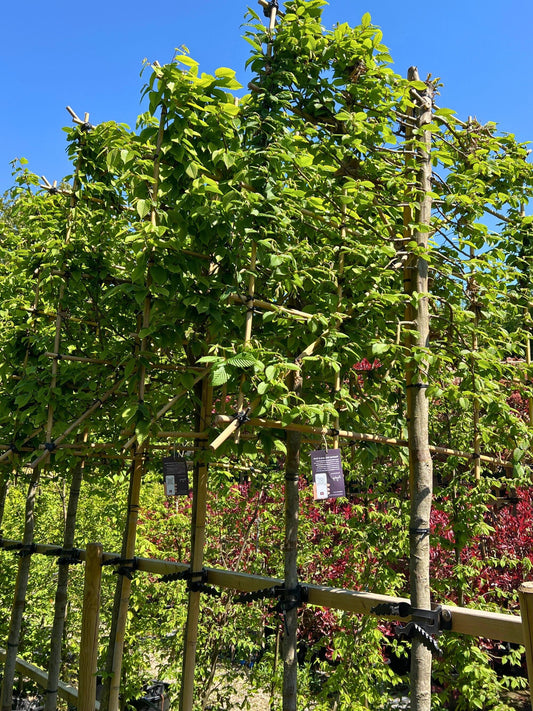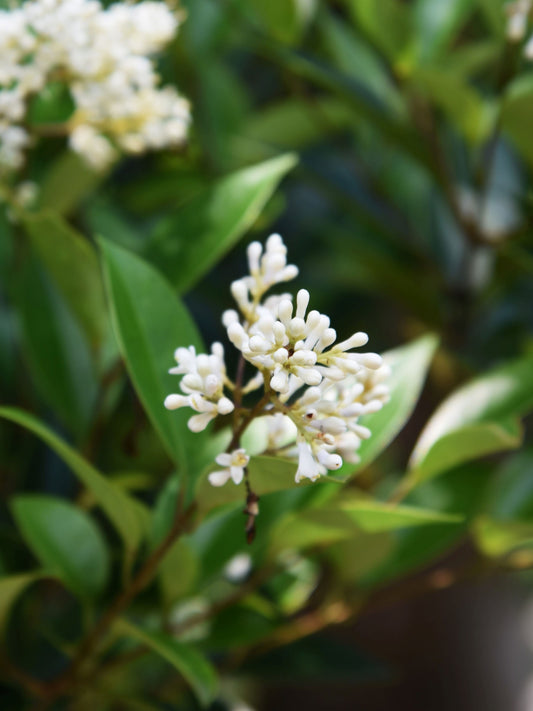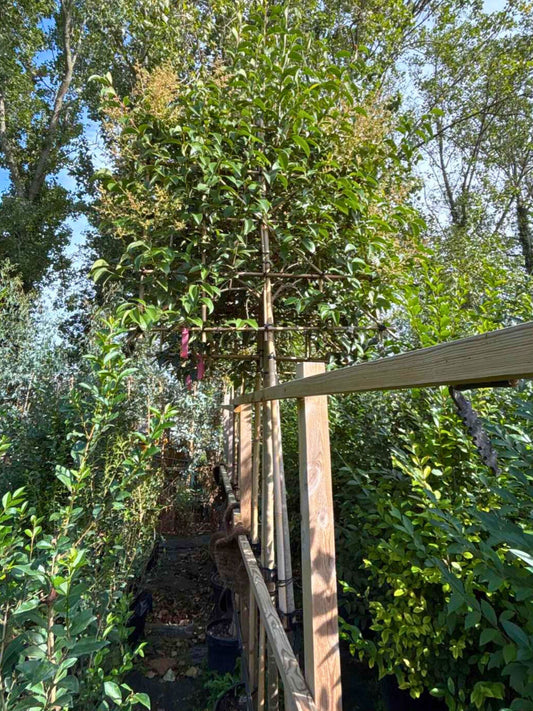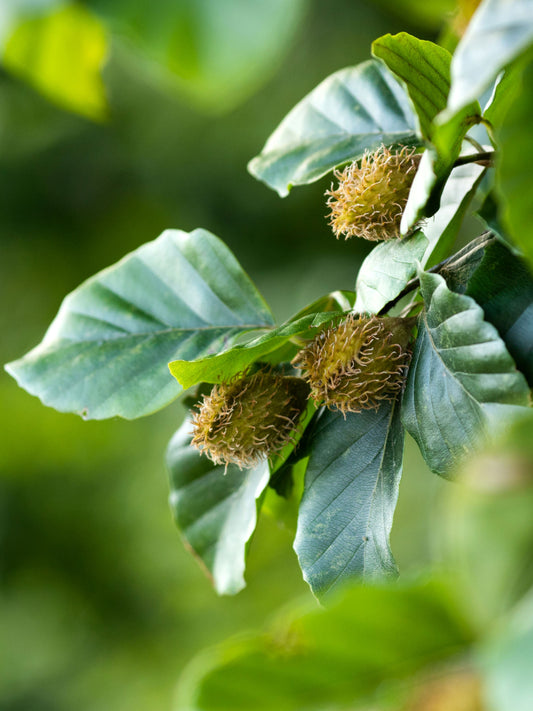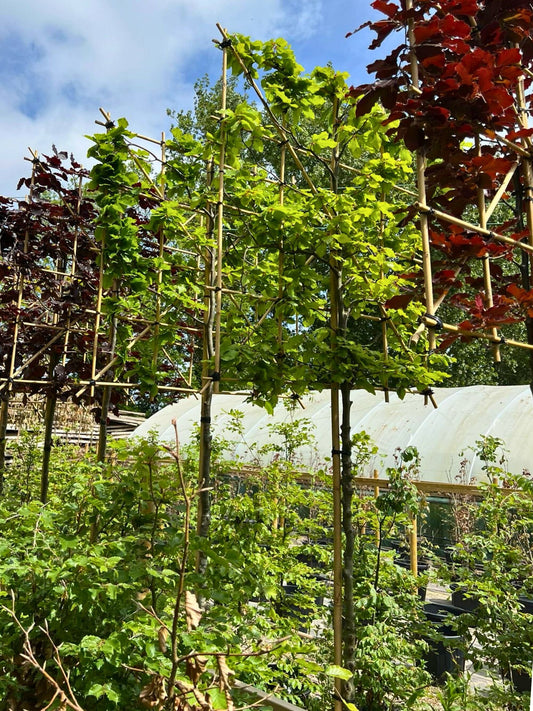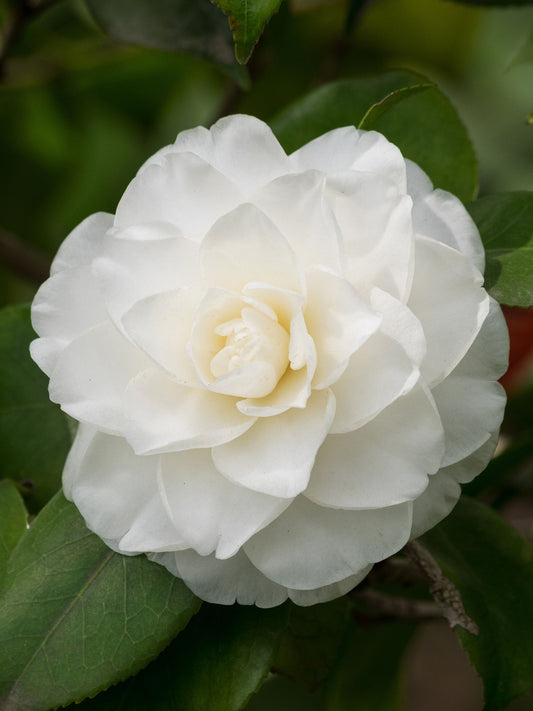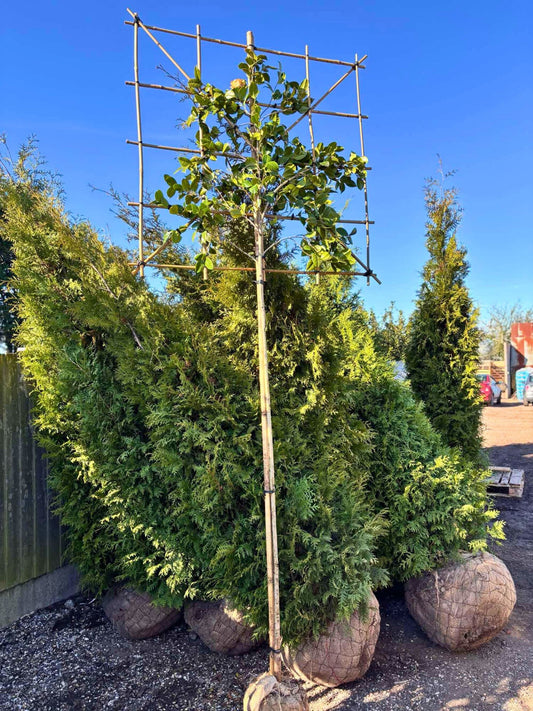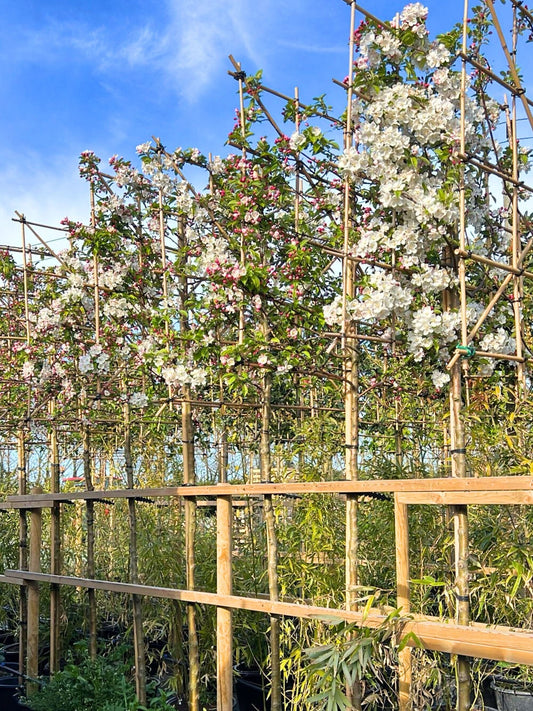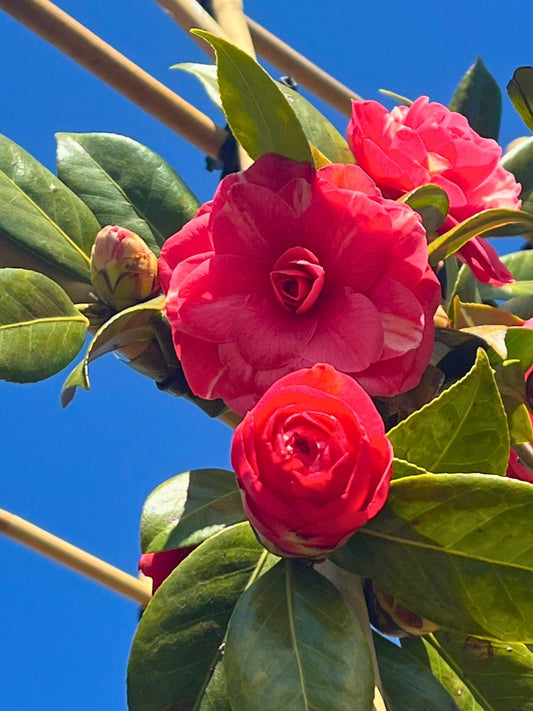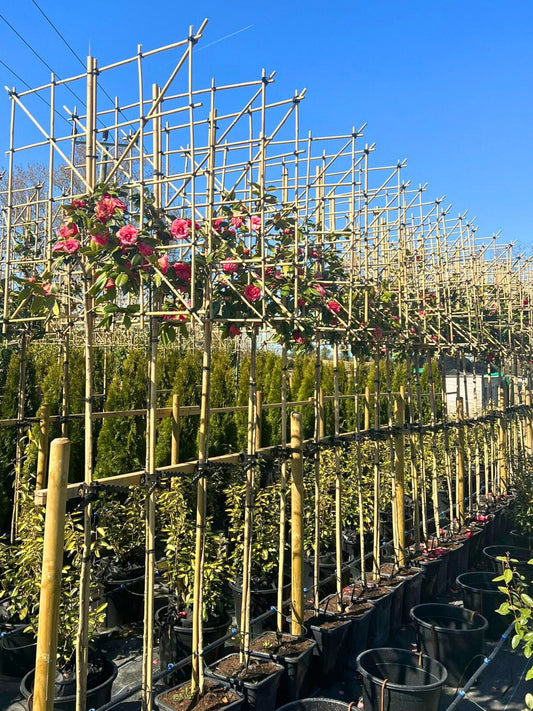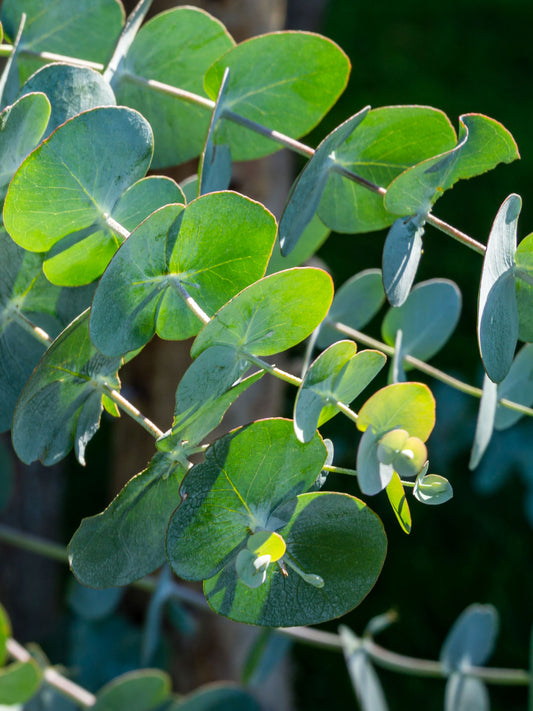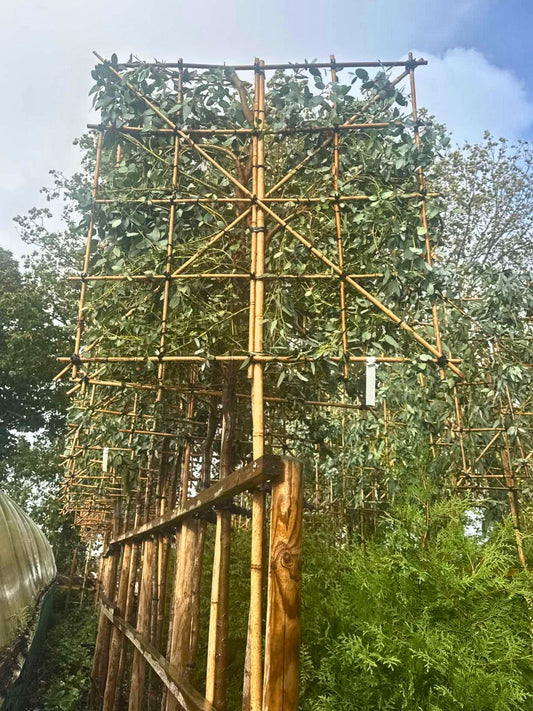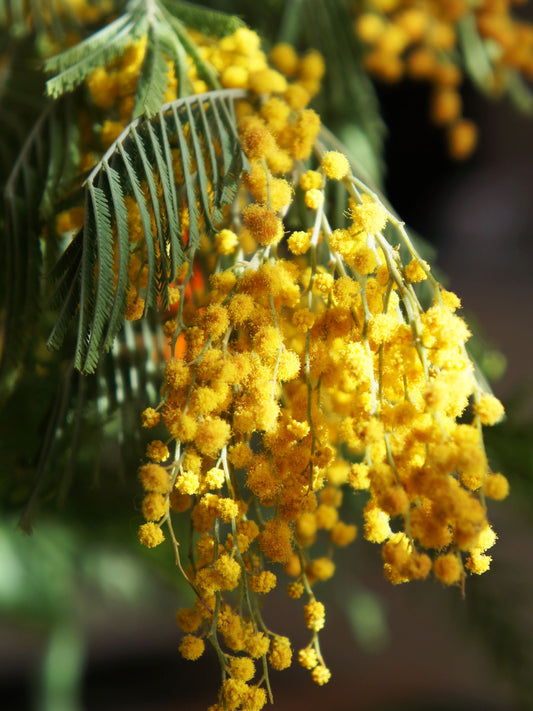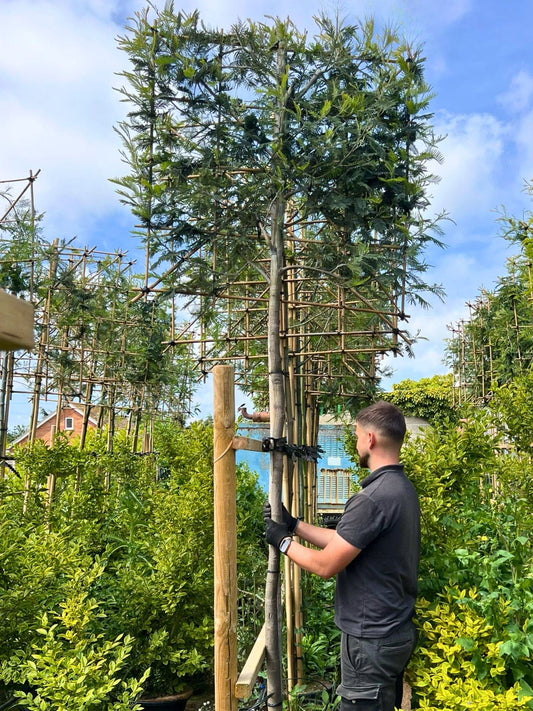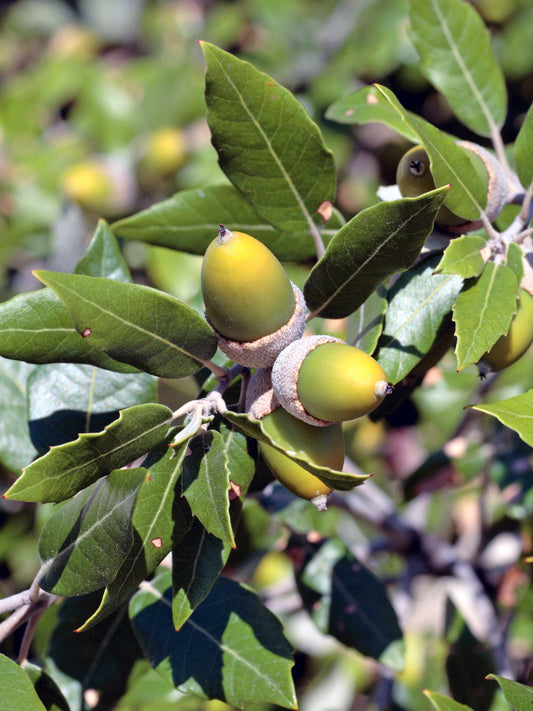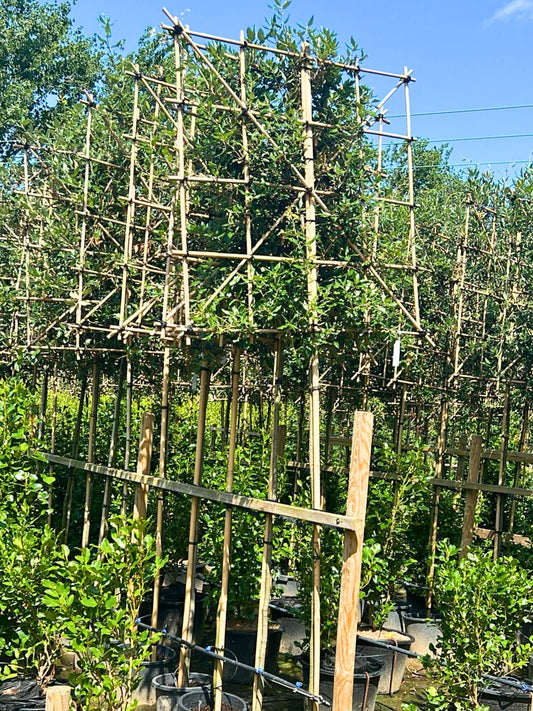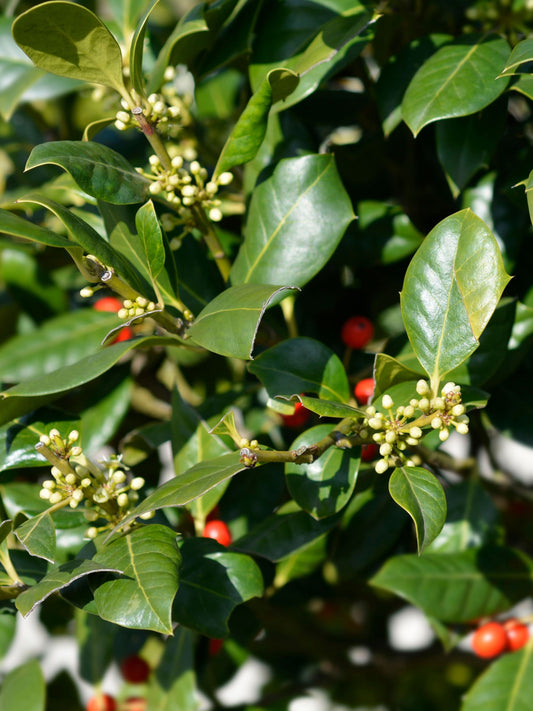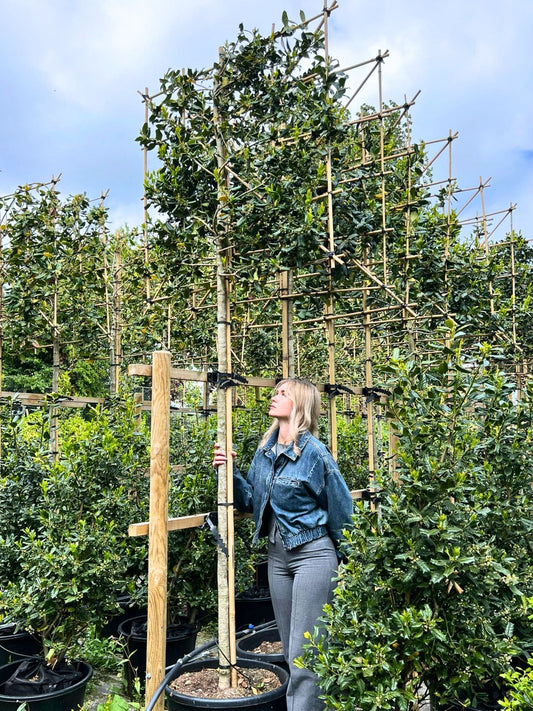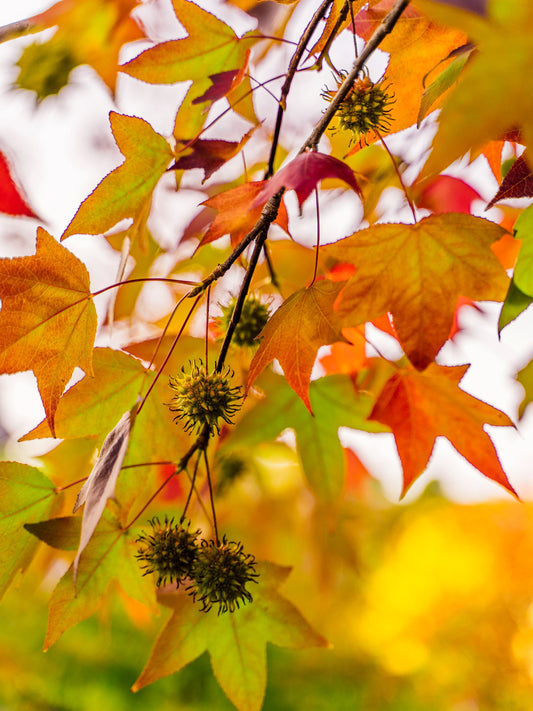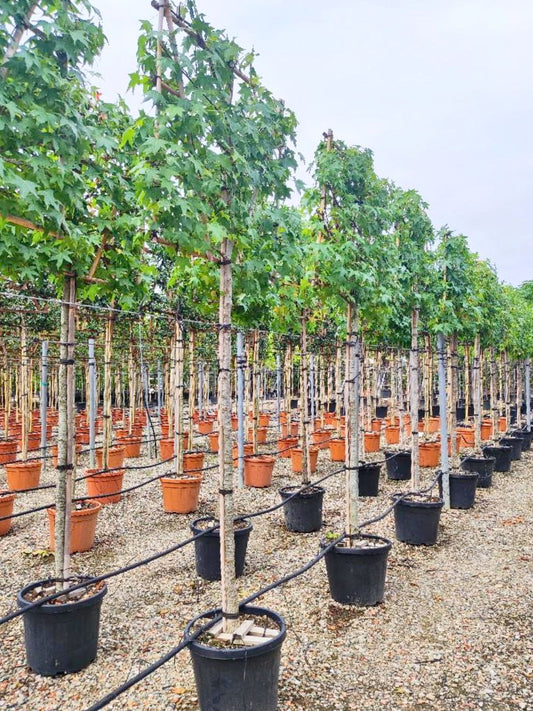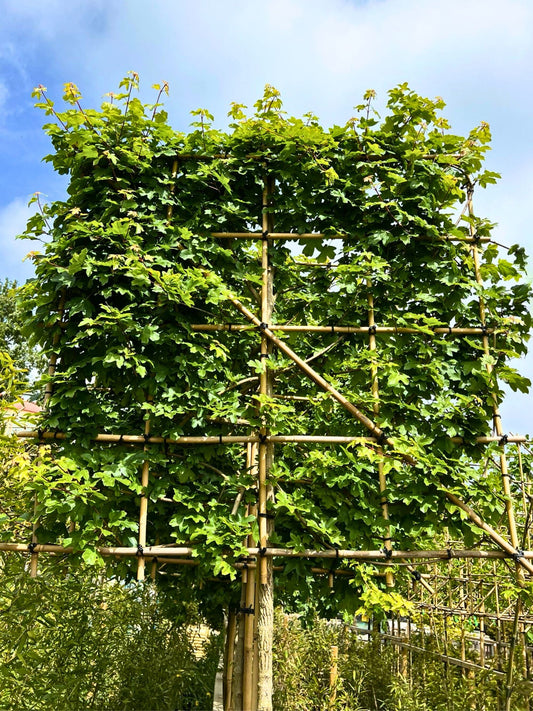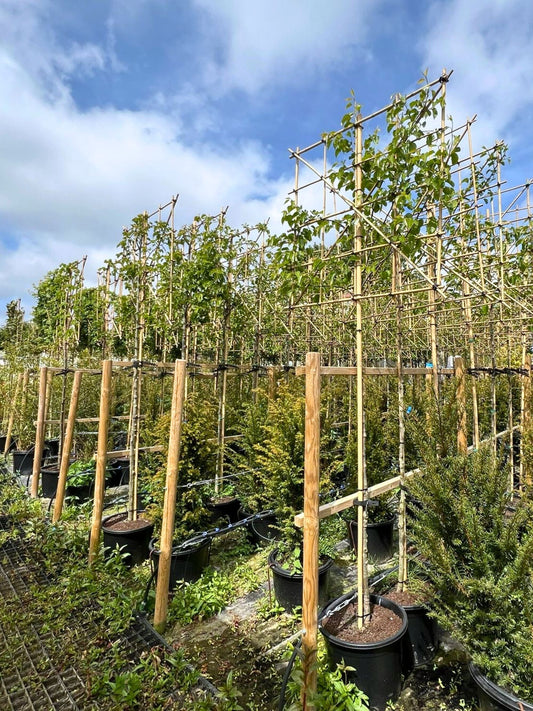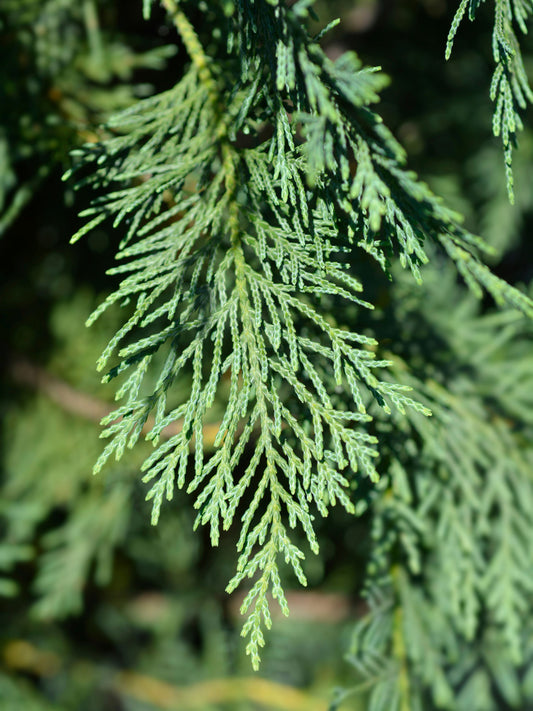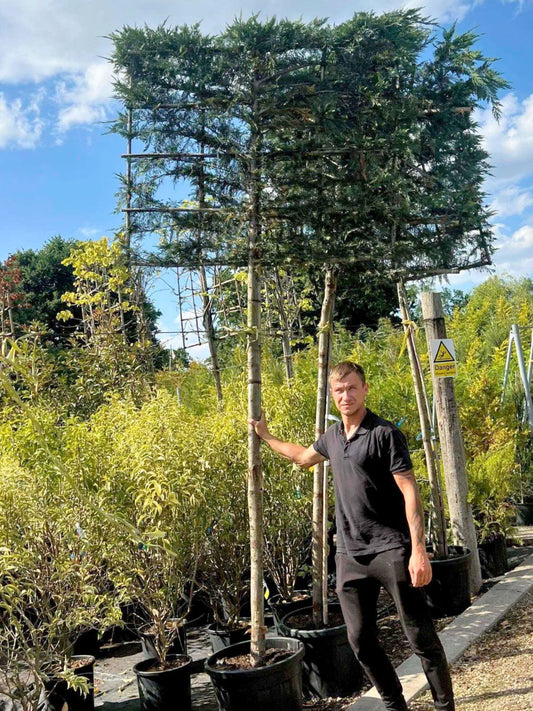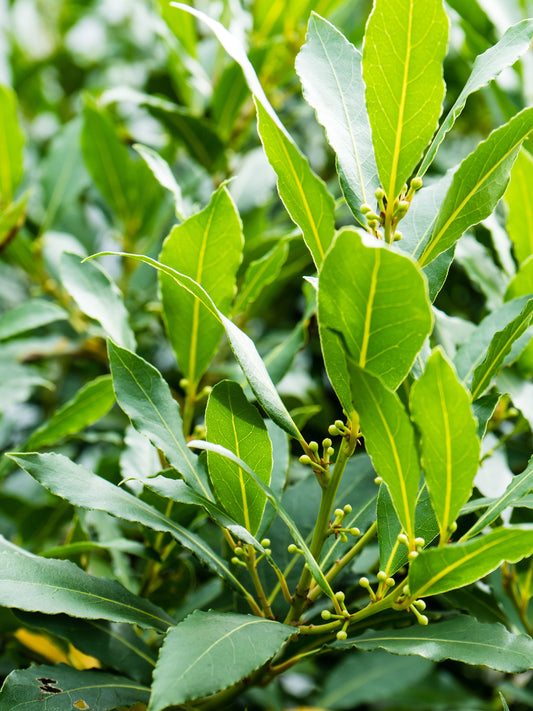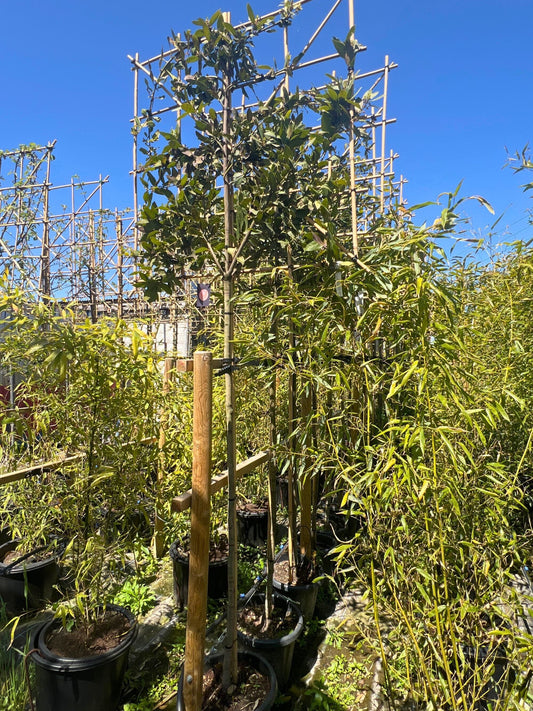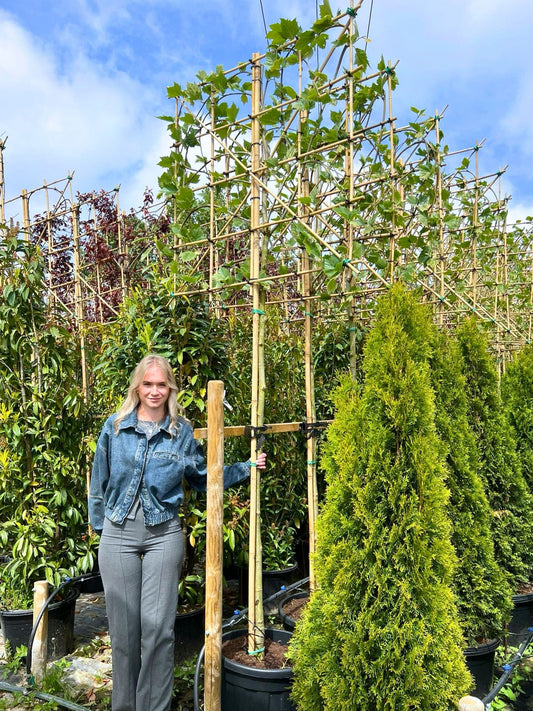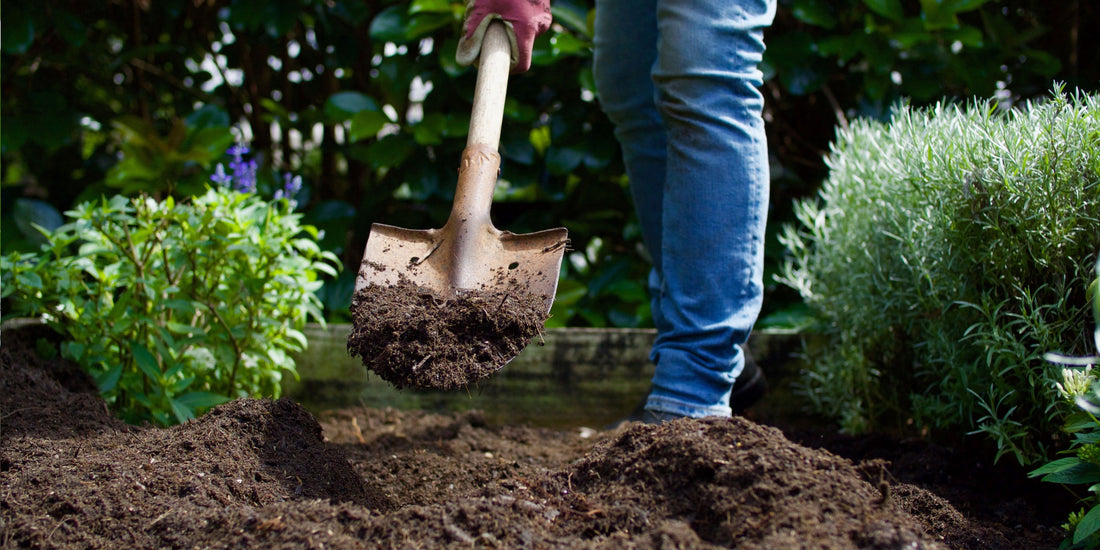
Planting Guide: How to Plant Pleached Trees Step-by-Step
When adding pleached trees to your garden, it's essential to follow proper planting and care techniques. This comprehensive guide will walk you through the planting process step by step.
Watch Expert Guidance: Award-Winning Designer & BBC1's Garden Rescue Presenter, Garden Ninja Lee Burkhill, explains the process in this fantastic video. Please note that in his video Lee uses the crossbar and stakes method. For ease we tend to recommend the double stake per tree method. Although the principle is the same, ensure trees are staked for stability.
Planting Pleached Trees: A 10-Step Guide
Step 1: Dig a Good Hole
Our typical tree pot size is around 35L, with an approximate 45cm diameter and 35cm height. Aim for around 1.5 times the size of the pot, wide enough to accommodate the root ball of the tree. Position the tree so that the root collar is level with the soil surface, avoiding planting it too deeply. Loosen the soil in the base and around the sides of the hole using a fork and remove any debris.
Step 2: Position Staking Kit
With the tree set aside, get your staking kit ready, position two stakes at opposite ends of the planting hole. Hammering in the stakes first prevents the risk of damaging your new tree’s delicate roots. Hammer in the stakes vertically at least 40cm deep. This ensures a solid support structure. If your garden is very windy, consider additional support.
View the full Staking Guide
Step 3: Remove Trees from Pots
Most of our trees are potted and ready for year-round planting. During the summer months, you'll always receive a potted tree that’s ready for planting. Before removing the tree from its pot, give it a good watering. Carefully take the tree out of the pot, being mindful of any bracing or staples holding it in place.
However, during the winter months (October to April), some trees, especially species like Hornbeam, may arrive as rootballs. This is because rootballs are often the best option at this time of year to ensure you get the best quality tree. If your tree arrives as a rootball, don’t worry! Simply leave the small hessian bag around the roots and plant it straight into the ground. The bag protects the tender roots and will naturally break down as the tree settles in.
Step 4: Position and Check
Place the tree in the planting hole and ensure it is well-positioned. Step back to evaluate its alignment and make any necessary adjustments with the soil to ensure the tree is level and true. Having a friend with a second pair of eyes can be helpful here.
Step 5: Backfill and Heel the Soil
Prior to backfilling, consider using a fertiliser. Backfill with the same forked soil. In you are adding extra organic matter, be mindful not to add too much as this could hinder the initial root growth necessary for the tree to anchor itself. Ensure the soil is thoroughly compressed. Use your heel to gently firm the soil all around the root ball, ensuring excellent contact between the roots and the soil. This is crucial because roots can die if left in air pockets. If needed, top up the soil to ground level and firm it down once more.
Step 6: Secure Tree with Rubber Ties
Position the tree upright and securely attach it to the support stakes using the rubber ties. Rubber is ideal here since it is both durable and does not cut into the trunk.
Step 7: Secure Branches with Smaller Rubber Ties
Monitor the training ties/bands to prevent them from becoming too tight and potentially damaging the stems. During the first season or two, tie in the branches at regular intervals to guide them to the desired shape. Again, rubber tree ties are ideal as they provide flexibility for growth and prevent damage to the tree.
Step 8: Water In
Give the tree a thorough watering. Proper watering is crucial, especially during the establishment phase. Ensure the soil remains moist but not waterlogged. Potted trees require extra attention.
View the full Watering Guide
Step 9: Extra Protection
Depending on your garden's conditions, protect your tree from wildlife damage, such as deer or rabbits, or provide additional protection in high-wind areas.
Step 10: Enjoy!
Finally, enjoy the beauty of your new pleached trees and reward yourself with a well-deserved cuppa!
Further Resources
RHS: How to Plant a Tree
RHS: How to Stake a Tree
Lee Burkhill: Pleached Trees; Planting and Support Guide
BBC Gardeners' World: Pleached Trees Grow Guide

